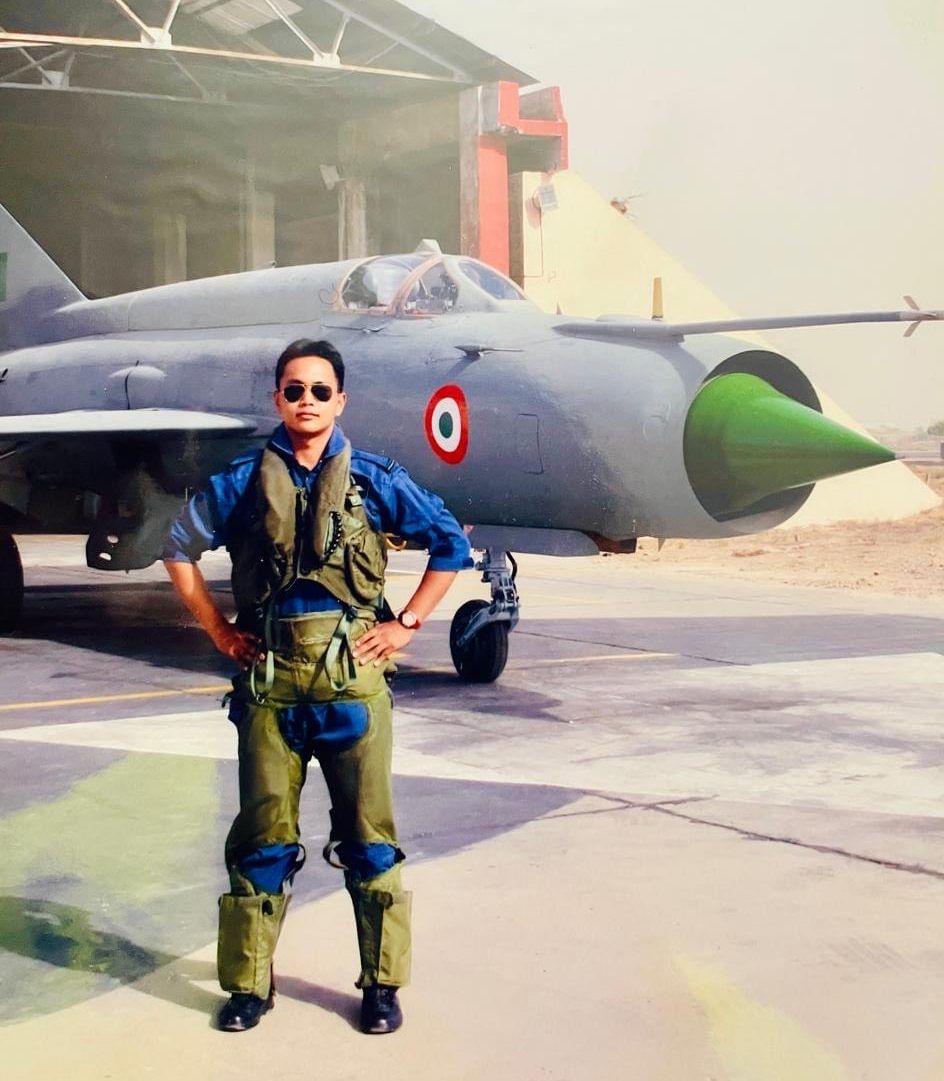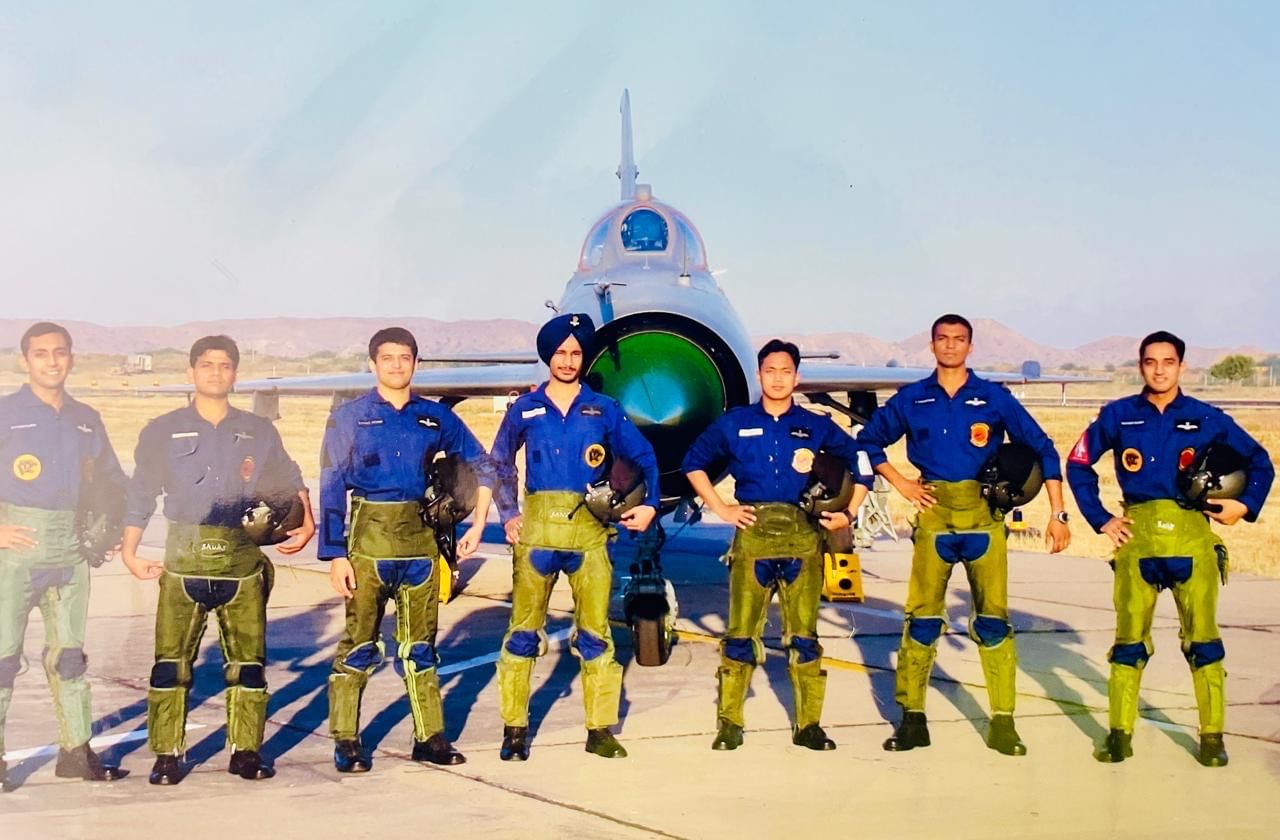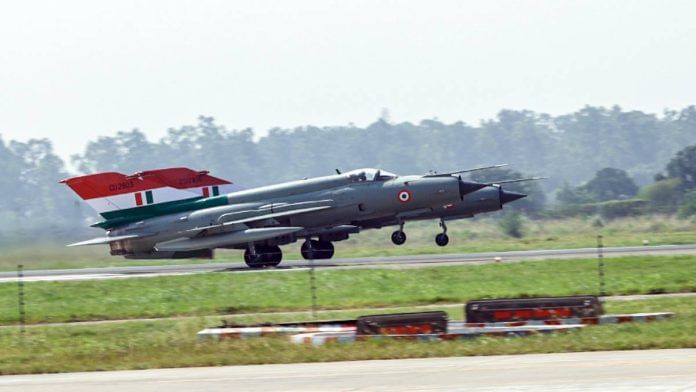I still remember that day in April 2007. It was somewhere in the westernmost part of India, with temperatures already near their limit in the morning hours, when I walked toward the flight line, my flight suit crisp, my heart pounding with pride and nervous anticipation. The very feeling of getting to fly the MiG-21 filled me with a profound sense of privilege — I was about to be associated with one of the best aircraft of its time. There she stood, glistening silver under the early daylight, poised to impart lessons I never realised I needed to grasp.
After completing my Mobile Conversion Flight training, I thought I knew about the MiG-21, only to be proven wrong later. The squadron’s tradition of welcoming new fighter aviators further added heat to the environment. In those days, it was far more subtle and demanding than even flying the aircraft itself. It’s still fresh in my memories how, in our initial briefings, seniors looked at us young pilots straight in the eye and delivered a truth that would echo in my mind every time I strapped in: “There is absolutely no scope for error with the MiG-21”.
Their words carried the weight of experience, of close calls, of friends who didn’t make it home. I learned that any minor adventurism could lead to serious consequences. The cockpit was confined, the ventilation inadequate for India’s sweltering summers, and the margin for error alarmingly slim. This is why we never simply said we “landed” after a sortie; we would jocularly convey that we had “arrived”. In hindsight, instilling this conviction in young aircrew was vital to conveying the true essence of a fighter pilot’s spirit.
Embracing mortality on the dance floor
Among the various aerial manoeuvres in the MiG-21, none instilled as much unease in most of us as the Loop. It was referred to as the “circle of death”, and this name was not mere theatrics, but a title earned through a combination of experience and reverence. Many of us approached this manoeuvre with genuine anxiety, our hands quivering ever so slightly on the control stick as we initiated that elegant yet harrowing arc.

As the aircraft balanced precariously on its back — amid the blaring stall warning cues and flashing lights — battling against gravity and the laws of physics, we could sense every nuance of the machine conveying itself through the controls. The MiG-21 demanded not only technical expertise but also an intimate comprehension of its essence. A single misstep, a fleeting loss of focus, and the “circle of death” would reveal an unforeseen twist.
Those early aviators who mastered these challenges while executing complex missions — hats off to them. They were pioneers navigating uncharted territories of supersonic flight, learning the hard way what the aircraft would and wouldn’t forgive. Reflecting on it, I realise this aspect may well be a primary reason why those seniors earned the respect that seems to have taken a back seat in today’s contemporary fleet.
Also read: When MiG-21 sets, we have a choice: mourn the ghost or harvest the wisdom
The brotherhood of discipline
The MiG-21 had a unique way of moulding us all, regardless of our experience levels. For younger aircrew, conversations about flying centered almost entirely around what not to do to avoid unrecoverable situations. This perspective was not born out of pessimism but rather served as a reservoir of survival wisdom passed down through generations of pilots who had imbibed these lessons through hard-earned experience.
This shared understanding of danger and respect created something beautiful — lifelong bonds that transcended rank, age, and background. Even now, decades later, I maintain closer contact with the people from those MiG-21 days than with colleagues from more recent assignments. There’s something about facing mortality together, about understanding that your wingman’s skill and judgement might mean the difference between arriving home and becoming a statistic.
The aircraft ensured that we all developed discipline commensurate with our flying experience. It was a stern teacher of humility, where precision wasn’t just preferred; it was necessary for survival. Many of India’s top pilots emerged from these unforgiving challenges, understanding that excellence required exactitude.
The magic touch
What made flying the MiG-21 truly special was its honest simplicity. Unlike modern aircraft with their sophisticated systems and computer-mediated controls, the MiG-21 was pure aviation. Flying it was like mounting a spring — the connection between the pilot and the machine was magical.
Every control input translated directly into aircraft response. There were no computers interpreting my intentions, no fly-by-wire systems cushioning my mistakes. When I pulled the stick, the aircraft responded immediately and honestly. When I made an error, the MiG-21 let me know instantly, sometimes dramatically. This direct feedback taught me to truly feel the aircraft, to understand flight not as an intellectual exercise but as a physical dialogue between human and machine.

Modern aircraft may be more capable and safer, but they’ve taken away this raw connection to flight. The computerised systems that protect today’s pilots from their mistakes also insulate them from the pure joy of unfiltered flying. In the MiG-21, there was no hiding from physics, no electronic nanny to catch your errors. It was just you, the machine, and the immutable laws of aerodynamics.
Moments of truth
When I think back to those squadron days, I remember not just the flying, but also the moments that defined us — the mix of fear and unadulterated exhilaration that lit up in the pilot’s eyes when they recounted their first solo flights, the way veterans would pause mid-sentence, their gaze distant, as memories of close calls or lost friends momentarily surfaced.
I remember the sizzling summers when the confined cockpit felt like an oven, yet we climbed in anyway because that’s what the mission demanded. I remember the nervous laughter in the briefing room before particularly challenging sorties and the profound silence afterward as we processed what we had just experienced.
The MiG-21 taught us that respect wasn’t just about following procedures; it was about understanding that every flight was a privilege that could be revoked permanently if we forgot to treat the aircraft with the reverence it demanded.
Also read: India needs foreign parts for Tejas. Defence atmanirbharta can’t become a weakness
A teacher’s final lesson
As we saw the final MiG-21 complete its ceremonial flypast over Chandigarh on 26 September 2025, with water cannon saluting and a multitude of onlookers watching our silver teacher in the sky one last time, I felt a profound sense of closure. The engines thundered once more, but what truly echoed was something much deeper — six decades of narratives, aspirations, and shared moments.
The distinct sound of the MiG-21 afterburners no longer resonates across India’s runways, but the aircraft’s essence continues to soar in our memories. Its legacy lives on in the tales exchanged over cups of tea in squadron cafeterias, in the meticulously kept logbooks of aviators, and in the hushed conversations among those of us who knew every sound, every vibration, every quirk of these extraordinary machines.
Retrospectively, I realise the MiG-21 wasn’t just an aircraft; it was a teacher, a test, and a tremendous privilege all wrapped in silver wings and jet exhaust. It demanded our best, forgave nothing, and in return, gave us something invaluable: the knowledge of what it truly means to fly, to push the boundaries of human capability, and to emerge as better pilots and ultimately, better people.
As Air Chief Marshal AP Singh said during that final ceremony, “This is not merely the end of an era, but a tribute to all who flew, fixed, fueled, and believed in the MiG-21”. And believe we did — in the aircraft, in each other, and in the magical experience of dancing with the sky in a silver-winged teacher that never stopped challenging us to be our absolute best.
It has been a privilege to be associated with this remarkable machine.
Group Captain Atul Hyanki is a fighter pilot who has flown the MiG-21 and Su-30MKI. He graduated from the National Defence Academy and holds a post-graduate diploma in Military Leadership from Command and Staff College, Singapore. Views are personal.
(Edited by Aamaan Alam Khan)






